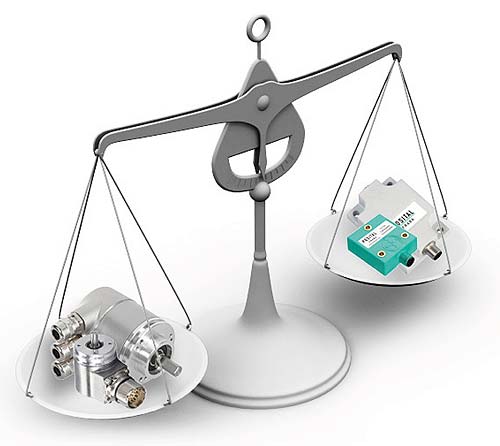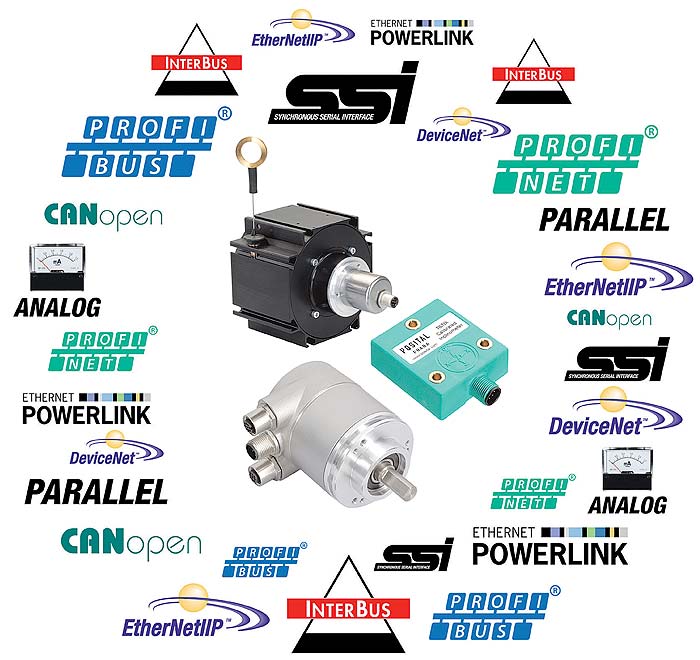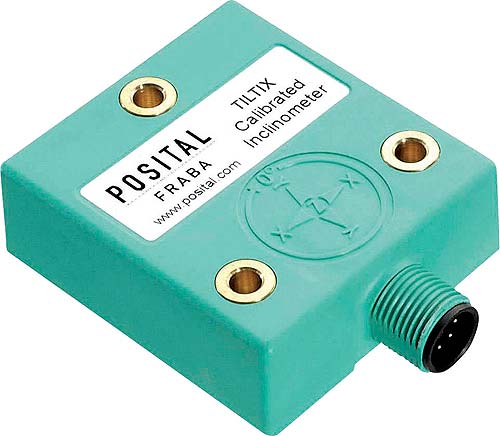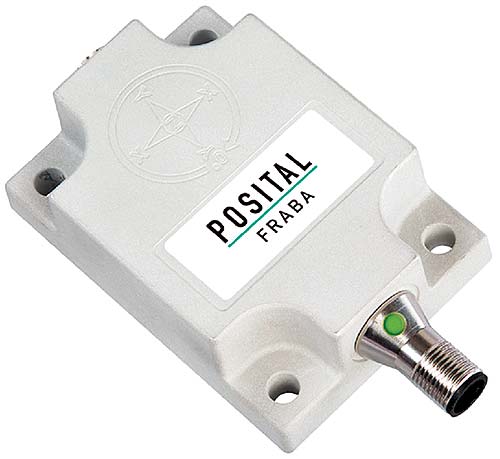 A Comparison of Inclinometers and Singleturn Rotary Encoders
A Comparison of Inclinometers and Singleturn Rotary Encoders
Absolute angular measurement over a 360° range is notably one of the key measurements in many industries and manufacturing units. In this article we will be discussing / comparing the similarities and the differences between single-turn rotary encoders and inclinometers based on their applications.
Encoders have evolved over time from simple incremental to more complex and very precise multiturn absolute encoders. The technology also has considerably changed. Various different technology options like optical, magnetic, and inductive are available with small differences in measurement resolution and accuracy. Whereas, inclinometers have been around for centuries and its evolution has been very diverse. The basic principle of inclinometers is that it measures the tilt of a plane surface. The technology has slowly evolved from simple mechanics using air bubbles and pendulums, to modified potentiometers, to magnetic based measurement. At present, very advanced inclinometers like TILTIX from POSITAL use cutting edge MEMS technology for measurement.
A common misconception was that inclinometers cannot measure a full turn in the range of 0 − 359.99° like single turn encoders. But, the advances in technology have made that possible and only a few companies provide single axis inclinometers which can measure a full range of 360°. So, in this article we will compare our inclinometers and rotary encoders and discuss the possibility of inclinometers as replacements to single turn encoders in a few applications constrained by a few factors.

 IXARC Magnetic Singleturn Encoders
IXARC Magnetic Singleturn Encoders
The technology used to detect shaft position is fairly simple in magnetic encoders. There is a permanent magnet attached to the device’s shaft and a 2-axis Hall Effect sensor mounted on the encoder casing. As the shaft and magnet rotate the Hall Effect sensor measures changes in the magnetic field and reports the angular measurement to the control system. Because IXARC magnetic encoders are individually calibrated before they are shipped, they can also provide higher accuracy (around one part in a thousand) than that typical with other magnetic rotary encoders.
 IXARC Optical Singleturn Encoders
IXARC Optical Singleturn Encoders
Optical encoders are made up of a revolving shaft with a code disc, an infrared light source and an optoelectronic scanning unit. The code disc is made of unbreakable plastics and usually printed with a unique pattern for each angular position (in Gray code). Infrared light from an LED is collimated and passed through the code disc. On the opposite side a photoreceptor array with a reticle picks up the information from the tracks. At every angle position a unique sequence of photoreceptors are blocked from light by dark segments on the code disc.
Highly Dynamic MEMS
 It is basically a Micro-Electro-Mechanical Systems (MEMS) sensor cell containing an array of electrodes that is embedded to a fully molded ASIC. It works based on a simplified model with only two electrodes: one is fixed, and the other is flexible (connected with spring elements). When the inclinometer is in a horizontal position, a corresponding capacitance is measured. If the sensor is tilted, the flexible electrode will change its position relative to the fixed electrode.
It is basically a Micro-Electro-Mechanical Systems (MEMS) sensor cell containing an array of electrodes that is embedded to a fully molded ASIC. It works based on a simplified model with only two electrodes: one is fixed, and the other is flexible (connected with spring elements). When the inclinometer is in a horizontal position, a corresponding capacitance is measured. If the sensor is tilted, the flexible electrode will change its position relative to the fixed electrode.
This results in a change of the capacitance between the two electrodes which is measured by the sensor cell.
The change of the capacitance is converted to a corresponding inclination.
Applications
TILTIX MEMS inclinometers, for instance is the best choice for applications and industries which require a good range of resolution/accuracy over a 360° range but with space and installation constraints. Unarguably, the most attractive feature of TILTIX MEMS is its compact size, its ability to be mounted vertically or horizontally and easy installation almost anywhere. Cost-wise TILTIX MEMS is the best option and it can be very useful in many industries like construction, robotics, and mining and in various applications involving farm machinery, mobile platforms, solar energy and drilling machinery where TILTIX MEMS’s compact size, high ingress protection and simple measurement and output features will be an added advantage.
 The IXARC optical encoders on the other hand have a very high resolution/accuracy, best dynamical performance, good resistance to temperature, shock and vibration and diverse output features. The most important aspect of IXARC encoders is the availability of all the communication interfaces in the industry which makes it easy to install in already available networks. These characteristics find applications in elevators, control systems, defense equipment, industrial robots, medical equipment, manufacturing, automotive where multiple outputs have to be monitored and the precision, resolution are all important considerations. Summarizing, the IXARC optical encoders are best needed when there is a need for high end dynamic sensing & measurement and there are no constraints on cost, size and skilled labor.
The IXARC optical encoders on the other hand have a very high resolution/accuracy, best dynamical performance, good resistance to temperature, shock and vibration and diverse output features. The most important aspect of IXARC encoders is the availability of all the communication interfaces in the industry which makes it easy to install in already available networks. These characteristics find applications in elevators, control systems, defense equipment, industrial robots, medical equipment, manufacturing, automotive where multiple outputs have to be monitored and the precision, resolution are all important considerations. Summarizing, the IXARC optical encoders are best needed when there is a need for high end dynamic sensing & measurement and there are no constraints on cost, size and skilled labor.
The IXARC magnetic encoders are very much similar to the optical encoders in the fields of application and characteristics. Major differences arise only with respect to the technology of measurement, the cost and size. Heavy duty magnetic encoders are available which are smaller in size when compared to optical but have high protection of up to IP69K and are even submergible (but with a lesser IP). All these characteristics lead to the use of magnetic encoders in industries which require good resolution, compact size, low cost and varied output features like industrial doors, drives and gear motors, food product machinery, material handling, rolling mills, wind energy, port machinery and textile industries.
Conclusion
For detecting up to 360°, POSITAL provides various options as discussed earlier and the user never needs to worry about the compatibility of the output to the equipment because as mentioned earlier, all the products come with a variety of communication interfaces to facilitate diverse fields of application. The single axis inclinometers and the singleturn encoders are two devices which measure in a range of 360°, but are chosen according to the characteristics of the measurement undertaken and its compatibility. When it comes to multi-turn, the encoders are the only option available. But in case of singleturn there is always an option of using inclinometers as replacements to the encoders.
www.oboyle.ro


